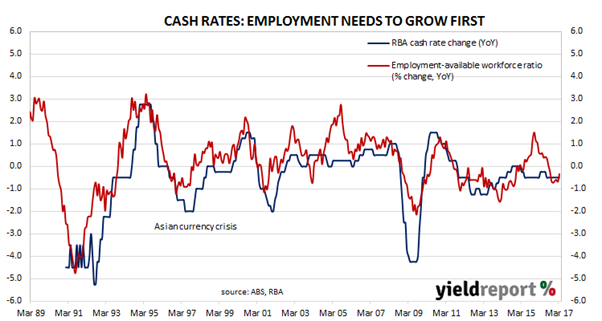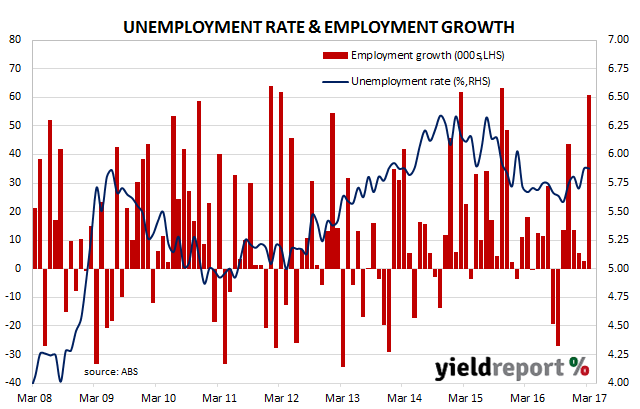Australia was effectively quarantined from the GFC and its aftermath. Many other countries’ economies went through the wringer and unemployment in these countries skyrocketed to 10% and above. In Australia, peak unemployment was reached in 2014 at the relatively low rate of 6.3%. While Australian unemployment may have escaped the worst of the GFC, the unemployment rate is now higher than rates in the UK, the US, Germany and New Zealand.
Australia’s unemployment rate remained steady in March as employment growth was offset by a higher participation rate. The Australian Bureau of Statistics has released employment estimates which indicated Australia’s unemployment rate remained at 5.9%. The total number of people employed in Australia in either full-time or part-time work rose by a massive +60,900 during the month, in contrast with the market’s expectation of +20,000. The participation rate increased from 64.6% to 64.8% and the total hours worked rose by 0.2% over the month or 0.8% more than the comparable number from March 2016.

Yields had increased overnight in offshore markets so it appears the employment figures were responsible for at least some downward pressure on yields. 3 year bond yields fell 1bp to finish the day at 1.78% while 10 year yields fell 3bps to finish at 2.50%. The Aussie lifted quickly to 75.70 US cents after the announcement and it was at 75.90 US cents at the close of business.
The reaction from economists and other commentators was generally positive, although doubts over the reliability of the data have surfaced again. The massive increase in total employment raised the odd eyebrow and the admission by the ABS of some errors regarding the number of under-employed did not help. Doubts regarding ABS figures have been around for some time now. In an era of fake news, these sorts of errors by government departments just add fuel to claims the public should not believe anything.


